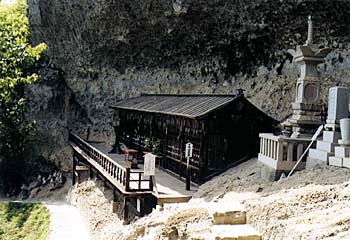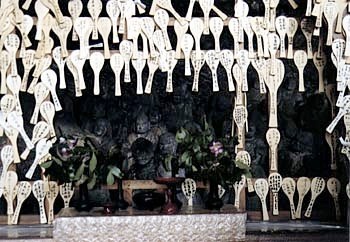

































A short bike ride and a steep hike up the mountain (or ride up a lift) brings you to Rakanji, an unusual temple whose buildings are literally set into the sheer cliff face. "Rakan" is Japanese for "arhat," the being who, in Buddhist belief, has attained nirvana. In addition to its location, the temple is famous for its 3,770 statues that include 500 arhat statues. There is also a temple devoted to Zenkai, the priest who carved the Ao-no-Domon tunnels, that displays the tools he supposedly actually used.
Arguably, every temple or shrine in Japan has at least one distinctive feature. The most unusual thing about this temple is the use of rice spatulas on which to write your prayers, rather than the little wooden boards that are normally used for this purpose. Not only is there a deep spiritual meaning, it's also a dandy pun: the word to scoop rice (sukuu) is the same as the word to "save" (as in a soul). Behind the rice scoops you can see a few of Rakanji's thousands of statues.

